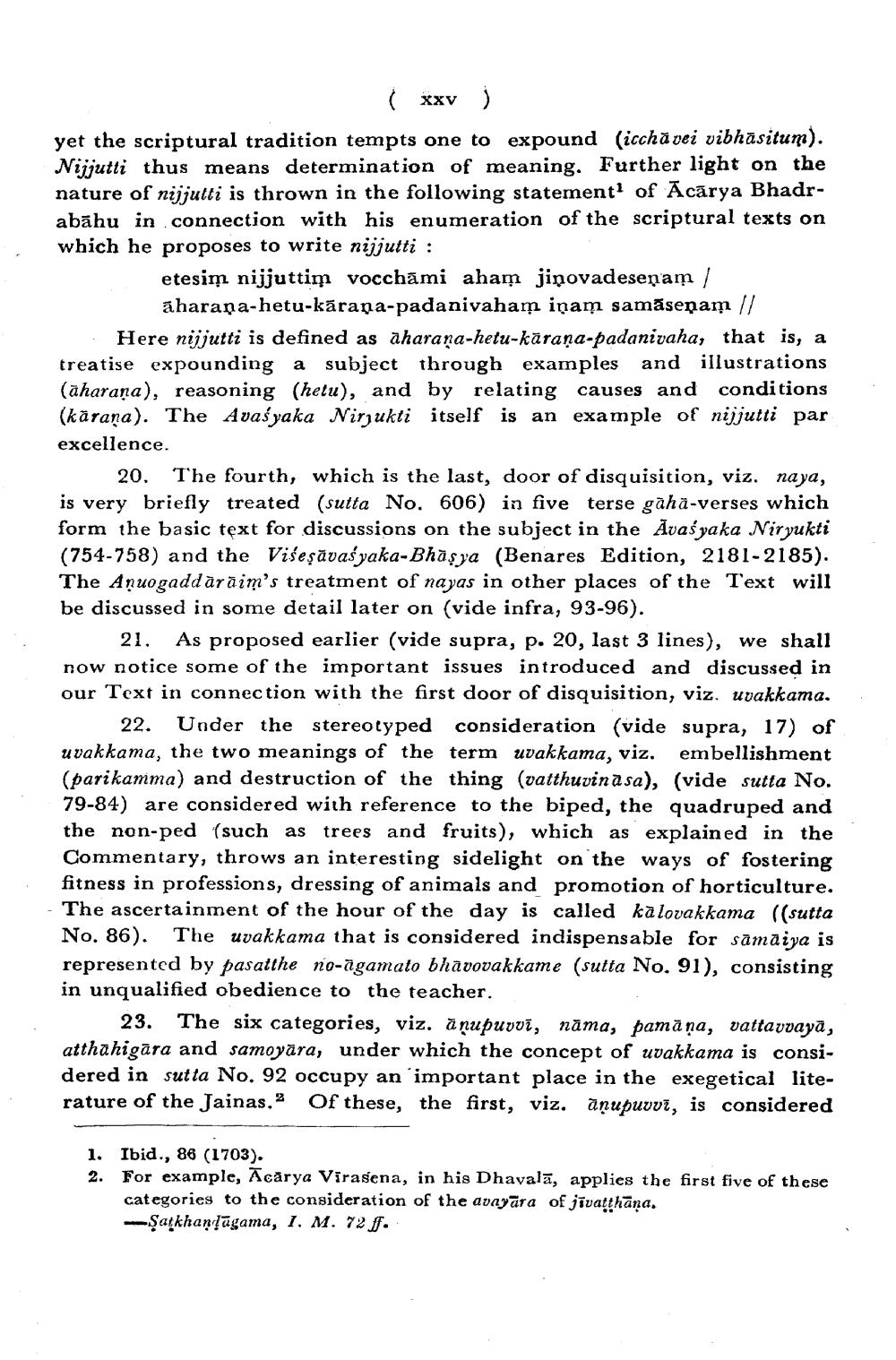________________
( xxv ) yet the scriptural tradition tempts one to expound (iccha vei vibhāsitum). Nijjutti thus means determination of meaning. Further light on the nature of nijjutti is thrown in the following statement of Acārya Bhadrabāhu in connection with his enumeration of the scriptural texts on which he proposes to write nijjutti :
etesim nijjuttim vocchāmi aham jinovadesenam /
aharana-hetu-kārana-padanivaham iņam samāsepam // Here nijjutti is defined as aharana-hetu-käraņa-padanivaha, that is, a treatise expounding a subject through examples and illustrations (aharana), reasoning (hetu), and by relating causes and conditions (kärana). The Avašyaka Nirjukti itself is an example of nijjutti par excellence.
20. The fourth, which is the last, door of disquisition, viz. naya, is very briefly treated (sutta No. 606) in five terse gaha-verses which form the basic text for discussions on the subject in the Avasyaka Niryukti (754-758) and the Visesăvašyaka-Bhāşya (Benares Edition, 2181-2185). The Anuogaddărāim's treatment of nayas in other places of the Text will be discussed in some detail later on (vide infra, 93-96).
21. As proposed earlier (vide supra, p. 20, last 3 lines), we shall now notice some of the important issues introduced and discussed in our Text in connection with the first door of disquisition, viz. uvakkama.
22. Under the stereotyped consideration (vide supra, 17) of uvakkama, the two meanings of the term uvakkama, viz. embellishment (parikamma) and destruction of the thing (vatthuvina sa), (vide sutta No. 79-84) are considered with reference to the biped, the quadruped and the non-ped (such as trees and fruits), which as explained in the Commentary, throws an interesting sidelight on the ways of fostering fitness in professions, dressing of animals and promotion of horticulture. - The ascertainment of the hour of the day is called ka lovakkama ((sutta No. 86). The uvakkama that is considered indispensable for samaiya is represented by pasatthe no-āgamato bhāvovakkame (sutta No. 91), consisting in unqualified obedience to the teacher.
23. The six categories, viz. nupuvvī, nāma, pamāņa, vattavvayā, atthahigāra and samoyāra, under which the concept of uvakkama is considered in sutta No. 92 occupy an 'important place in the exegetical literature of the Jainas, 2 Of these, the first, viz. anupuvvī, is considered
1
1. Ibid., 86 (1703). 2. For example, Ācārya Virasena, in his Dhavalā, applies the first five of these categories to the consideration of the avayara of jīvatthāna.
Şarkhanļāgama, 1. M. 72 f.




